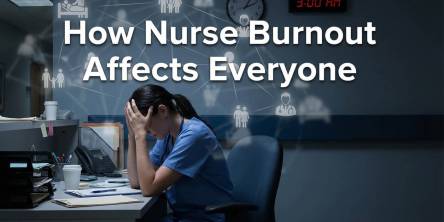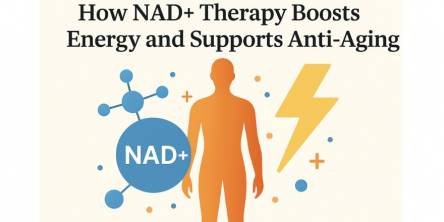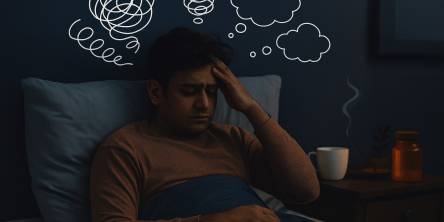Understanding Medication Assisted Treatment: A Comprehensive Guide to a Life-Saving Approach to Addiction Recovery

Substance use disorders (SUDs) are complex and often chronic conditions that impact millions of individuals and their families each year. With the growing opioid epidemic and increasing rates of addiction to alcohol and other drugs, effective treatment options are more essential than ever. One such evidence-based approach is Medication Assisted Treatment (MAT), a method that combines prescription medications with counseling and behavioral therapies to treat substance use disorders.
It has been proven to increase the chances of long-term recovery and reduce the risk of overdose, yet it remains misunderstood and underutilized.
In this article, we’ll explore what Medication-Assisted Treatment is, how it works, the types of medications used, its effectiveness, common misconceptions, and why it may be a critical component of the recovery journey for many people.
What is Medication-Assisted Treatment?
Medication-Assisted Treatment is an integrated treatment approach that uses FDA-approved medications in combination with counseling and behavioral therapies to treat substance use disorders, primarily opioid use disorder (OUD) and alcohol use disorder (AUD). It is grounded in decades of clinical research and has become a gold standard in treating certain forms of addiction.
The key principle of this concept is whole-person treatment. While medication helps reduce cravings and withdrawal symptoms, therapy addresses the underlying psychological, emotional, and behavioral aspects of addiction. This dual approach is essential, as addiction is both a physical and mental health condition.
The Medications Used in Medication-Assisted Treatment
There are different medications approved for treating opioid and alcohol dependence. Each works differently and is selected based on the individual’s needs, history, and treatment goals.
1. For Opioid Use Disorder (OUD)
● Methadone: A long-acting opioid agonist that reduces withdrawal symptoms and cravings without producing a high when used as prescribed. It must be dispensed through licensed opioid treatment programs (OTPs).
● Buprenorphine (Suboxone®, Subutex®): A partial opioid agonist that alleviates cravings and withdrawal symptoms. It has a ceiling effect, reducing the risk of misuse or overdose. Buprenorphine can be prescribed by specially trained providers in office-based settings.
● Naltrexone (Vivitrol®): An opioid antagonist that blocks the effects of opioids. It’s used after detox and requires that the patient be opioid-free for 7–10 days. It’s available in pill form or as a monthly injection.
2. For Alcohol Use Disorder (AUD)
● Disulfiram (Antabuse®): Causes unpleasant effects like nausea and vomiting when alcohol is consumed, creating a deterrent effect.
● Naltrexone: Also used for AUD, it reduces the rewarding effects of alcohol and helps decrease the urge to drink.
● Acamprosate (Campral®): Helps stabilize brain chemistry and reduce cravings in individuals who have already quit drinking.
Each medication has unique benefits, potential side effects, and usage requirements. A qualified provider will evaluate and determine the most appropriate option based on the individual’s clinical profile and recovery goals.
The Role of Behavioral Therapy
While medication addresses the physiological aspects of addiction, counseling and behavioral therapy help individuals develop coping skills, address trauma, manage stress, and rebuild their lives. Common therapeutic modalities in such programs include:
● Cognitive Behavioral Therapy (CBT)
● Motivational Interviewing (MI)
● Contingency Management
● Family Therapy
● 12-Step Facilitation
These interventions can be delivered in individual or group settings and often evolve based on progress and needs over time. Combining therapy with medication improves engagement and outcomes significantly more than either approach alone.
Effectiveness of Medication-Assisted Treatment: What the Research Shows
Medication Assisted treatment is one of the most scientifically supported treatment approaches for opioid and alcohol use disorders. According to the Substance Abuse and Mental Health Services Administration (SAMHSA) and the National Institute on Drug Abuse (NIDA):
● Increases retention in treatment
● Reduces illicit drug use
● Lowers risk of overdose and death
● Improves birth outcomes in pregnant women with SUDs
● Reduces criminal behavior
● Supports long-term recovery
A large body of evidence shows that patients receiving MAT are more likely to stay in treatment, avoid relapse, and lead productive lives compared to those receiving abstinence-only approaches.
Overcoming Stigma and Misconceptions
Despite its success, Medication-Assisted Treatment often faces stigma, both from the general public and within some treatment communities. Common myths include:
● MAT just replaces one drug with another: This misconception overlooks the difference between addiction and medical treatment. MAT medications, when used as prescribed, do not produce the euphoric high associated with drug misuse. Instead, they stabilize brain chemistry and support normal functioning.
● You’re not really sober if you’re on MAT: Recovery is not a one-size-fits-all journey. For many people, sobriety includes taking medications that allow them to live free from the chaos of addiction.
● MAT should be short-term only: There’s no universal timeline. Some individuals may use MAT for months, others for years. Like insulin for diabetes, MAT may be necessary long-term for managing a chronic condition.
Combating these myths is essential to improving access and encouraging individuals to seek effective treatment without shame or judgment.
Who is an Ideal Candidate?
Not everyone with a substance use disorder will benefit from or require MAT. However, it is particularly effective for individuals who:
● Have a history of opioid or alcohol dependence
● Have relapsed following abstinence-based treatment
● Experience strong cravings or withdrawal symptoms
● Are at high risk for overdose
● Are pregnant and need a safe recovery plan
Treatment should always be individualized. An addiction medicine specialist or treatment provider can help determine whether MAT is appropriate and guide patients through their options.
Access and Availability of MAT
While MAT is highly effective, access remains uneven in many parts of the country. Rural areas, in particular, often lack providers certified to prescribe medications like buprenorphine. In recent years, regulatory changes have aimed to improve access, such as expanding telehealth options and removing certain training requirements for prescribers.
Insurance coverage, provider education, and public policy also play a role in ensuring that MAT is available to those who need it. Efforts continue to reduce barriers and integrate MAT into primary care, correctional settings, and community-based programs.
MAT and Harm Reduction
MAT is a cornerstone of the harm reduction approach, which prioritizes reducing the negative consequences of drug use rather than requiring abstinence as a prerequisite for support. By stabilizing individuals and reducing the risk of overdose, MAT helps save lives even for those not yet ready to commit to complete abstinence.
Programs that provide MAT alongside access to naloxone (an opioid overdose reversal drug), syringe exchange, and peer recovery support show dramatically improved outcomes.
Conclusion: A Life-Saving Tool for the Recovery Journey
Medication-Assisted Treatment is not a miracle cure, but it is a proven, life-saving tool that helps thousands of people recover from substance use disorders every day. By combining medications with behavioral support, MAT offers a balanced, compassionate, and science-based path to healing.
Recovery looks different for everyone. For many, MAT is what makes that journey possible.
If you or a loved one is struggling with addiction, talk to a healthcare provider about whether MAT might be right for you. With the right support, recovery is not just possible — it's probable.
Similar Articles
Picture this: You're parked at your workspace, battling to focus on what should be a straightforward five-minute task. That afternoon slump? It's demolishing you today.
Joint pain and arthritis are common health issues that tend to become more intense during the winter season
Discover the benefits, challenges, and future of locum medical jobs. Learn how locum recruitment agencies support flexible, diverse career opportunities for healthcare professionals seeking dynamic work environments.
Burnout in the healthcare environment is a significant and growing crisis.
NAD+ therapy restores cellular energy, enhances metabolism, and promotes anti-aging by supporting DNA repair and improved overall vitality.
Seasonal Affective Disorder (SAD) is a type of depression linked to seasonal changes, most commonly seen during the late fall and winter months when sunlight exposure decreases
Enhance sleep comfort and support with a mattress topper queen. Discover how the right topper improves pressure relief, temperature control, and rest.
If your mind refuses to be quiet the moment your head touches the pillow, welcome to the club. Overthinking at night has silently become nearly synonymous with modern forms of insomnia.
Discover how longevity clinics use key biomarkers to assess ageing, improve health, and guide personalized wellness strategies for a longer, healthier life.









